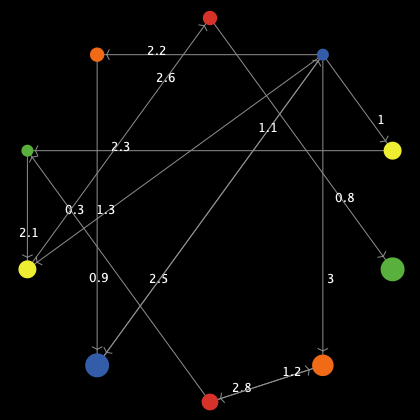

- #Netlogo models how to
- #Netlogo models software
- #Netlogo models code
- #Netlogo models Bluetooth
- #Netlogo models professional
#Netlogo models code
art, biology, chemistry, computer science, mathematics, networks, philosophy, physics, psychology, and other social sciences) and several code examples which succinctly illustrate particular features and coding techniques. NetLogo also comes with an extensive library of models from different disciplines (e.g.
#Netlogo models how to
The user manual includes three tutorials to help beginners get started, an excellent programming guide, and a comprehensive dictionary with the definitions of all NetLogo primitives, including examples of how to use them. One of the reasons why NetLogo is so easy to learn is that it is very well documented.
#Netlogo models professional
NetLogo is by far the most professional platform in its appearance and documentation. NetLogo can easily run simulations with several tens of thousands of agents. NetLogo is powerful in that it can accommodate reasonably large and complex simulations, and its execution speed is more than acceptable for most purposes. Our experience does not support that belief. NetLogo has become a standard platform for agent-based simulation, yet there appears to be widespread belief that it is not suitable for large and complex models due to slow execution.

Java or Objective-C, and can often reduce programming efforts significantly when compared with other languages. NetLogo language is definitely simpler to use than e.g. NetLogo also has the big advantage over pseudo-code of being executable, so the user can run and test the examples. Since NetLogo was designed to be easily readable, we believe that NetLogo code is about as easy to read as any pseudo-code we would have used. As a matter of fact, NetLogo language could perfectly be used as pseudo-code to communicate algorithms implemented in other languages. One characteristic that makes the NetLogo language easy to learn is that it is remarkably close to natural language. Someone with programming experience could reduce the estimated time to 1-2 days. To be concrete, we would estimate that an average scholar without previous coding experience can learn the basics of the language and be in a position to write a simple agent-based model after 2-4 days of work.
#Netlogo models software
All reviews of the software highlight how easy it is to learn. The language used to code models within NetLogo –which is also called NetLogo– has been designed following a “Low Threshold, No Ceiling” philosophy (Wilensky and Rand, 2015). NetLogo stands out as the quickest to learn and the easiest to use. We recommend NetLogo and will use it throughout this book for the many reasons we outline below.

Nowadays, there are many languages and software platforms that can be employed to create agent-based models, and at the time of writing NetLogo is the most widely used. NetLogo (Wilensky, 1999) is a modeling environment designed for coding and running agent-based simulations. The entry level is simple enough and the tutorials provided in the package are straightforward and clear enough that anyone who can read and is comfortable using a keyboard and mouse could create their own models in a short time, with little or no additional instruction. NetLogo is a well-written, easy-to-install, easy-to-use, easy-to-extend, and easy-to-publish-online environment. The HeadRush Prime unites your existing equipment while opening a world of new sonic possibilities.0.3.

#Netlogo models Bluetooth
In addition to the onboard Wi-Fi and Bluetooth audio connectivity, the Prime also features a USB-A input for importing/exporting files directly from/to a USB drive, as well as connecting external USB-MIDI controllers. Additionally, there is a ¼-inch external amp output that can be used to change between clean and dirty channels or toggle other footswitch settings on a connected traditional guitar amplifier. The Prime also features an onboard ¼-inch stereo FX loop to integrate pedals and outboard gear at any point in your signal chain and allows for advanced integration into your rig via the four-cable method. The rear panel of Prime is packed with inputs and outputs, including a ¼-inch input for guitars, Combo XLR+¼-inch input with switchable 48V phantom power for microphones, (2) XLR outputs with switchable ground lift, (2) ¼-inch TRS outputs switchable between amp or line level, a ⅛-inch headphones output, and 5-Pin MIDI input and output connections. The HeadRush Prime assimilates seamlessly into your current rig with all the connections you need to handle any performance situation.


 0 kommentar(er)
0 kommentar(er)
